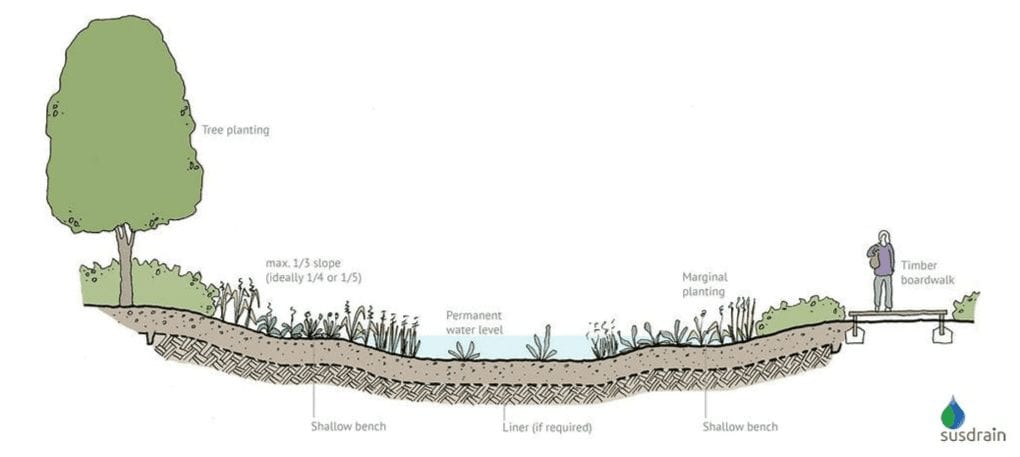In Wales, any development over 100m2 must have a SuDS (Sustainable Drainage System). In the rest of the UK, the situation is less prescriptive – but is change on the way? Our in-house SuDS specialist, Mark Jones, takes a look.
The picture with SuDS is ever developing. In fact, an increasing number of local authorities, especially in the south, expect to see them in planning applications. And yet, it is still not mandatory as it is in Wales.
The Four Pillars of Sustainable Drainage System (SuDS)
The CIRIA (Construction Industry Research and Information Association) guidance sets out four pillars for SuDS:
- Quantity: the retention of surface water on-site to control outflows during peak events.
- Quality: the filtering of water to remove contaminants and sediment before it is discharged. For example, through a reed bed or pond.
- Bio-diversity: the use of swales, balancing ponds or other elements to create habitat and encourage diversity in fauna and flora.
- Amenity: using the SuDS to add value to sites through the creation of walkways, play areas etc.
Often, developers are content to incorporate SuDS into the wider requirement. Particularly for the creation of green space on larger scale developments. This regularly produces the scope to hit the four pillars. Moreover, it can create a real focus to housing developments with ponds, footpaths and wildlife areas. It also has the benefit of not hitting construction cost margins, as separate green and SuDS space won’t consume valuable development area.
A good balancing act
This balancing act works well. Moreover, at the LK Group, we encourage all developers to look at SuDS as part of their schemes, where this is appropriate. With smaller schemes, it is often not possible to hit all four pillars, but it is usually possible to hit some.
We do all we can to encourage our clients, pointing out the increasing house values that have been recognised within other greener developments, within progressive local authorities. Until local authorities can follow the Welsh example and insist on SuDS, it will remain a balancing act between encouragement from specialists like us, local planning precedent and developer budgets, usually tied into the number of units.
Against the backdrop of increasing flood events and the drive for sustainability, it feels to me like a move to the Welsh model is inevitable and would represent a significant step forward.
*** Photo provided by susdrain ***
